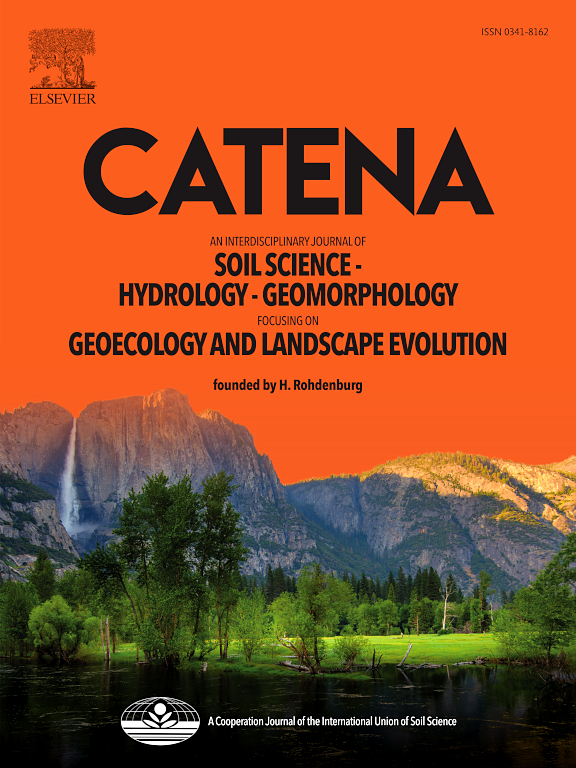Pluvial conditions increased the risk of debris flows over the southern Hengduan Mountains: Evidence from tree-ring blue intensity and historical documents
IF 5.4
1区 农林科学
Q1 GEOSCIENCES, MULTIDISCIPLINARY
引用次数: 0
Abstract
The Hengduan Mountains (HDM) region is sensitive to the Indian summer monsoon (ISM) and Pacific Ocean-atmosphere processes, and the hydroclimate strongly impacts the local and downstream agriculture and ecology. Numerous dendrochronology studies have been conducted in the northern HDM to understand the historical hydroclimate regimes. In this study, tree rings were collected from the southern HDM and robust chronologies were generated using tree-ring earlywood and latewood widths as well as blue light intensity (BI). Earlywood BI was used to reconstruct the regional spring–summer (February–July) self-calibrating Palmer Drought Severity Index (scPDSI) spanning from 1745 to 2017. An assessment of our reconstruction combined with historical documents revealed that wet epochs occurred in the 1790s–1810s and 1980s–2000s while dry periods occurred in the 1910s–1920s and 2000–2020s. The El Niño-Southern Oscillation (ENSO) strongly modulated the regional hydroclimate through teleconnection. In addition, anomalous spring–summer precipitation was associated with the occurrence of debris flows. The findings indicate that expected increase in regional precipitation extremes are likely to enhance the risk of geomorphological activities and mass movement in the HDM in the future, thus providing critical insights for disaster prevention and management in the context of climate change.
求助全文
约1分钟内获得全文
求助全文
来源期刊

Catena
环境科学-地球科学综合
CiteScore
10.50
自引率
9.70%
发文量
816
审稿时长
54 days
期刊介绍:
Catena publishes papers describing original field and laboratory investigations and reviews on geoecology and landscape evolution with emphasis on interdisciplinary aspects of soil science, hydrology and geomorphology. It aims to disseminate new knowledge and foster better understanding of the physical environment, of evolutionary sequences that have resulted in past and current landscapes, and of the natural processes that are likely to determine the fate of our terrestrial environment.
Papers within any one of the above topics are welcome provided they are of sufficiently wide interest and relevance.
 求助内容:
求助内容: 应助结果提醒方式:
应助结果提醒方式:


